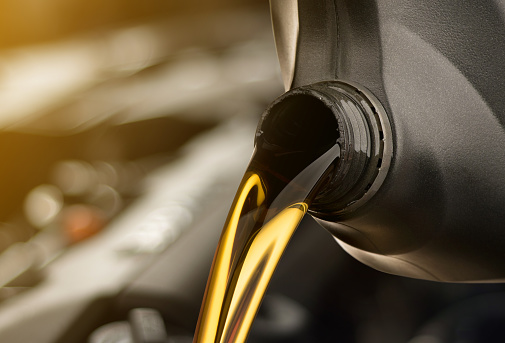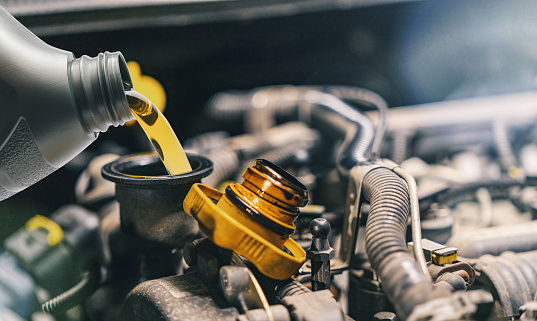Understand when and how often to change it, what type your car needs, and more.
1. When to Change the Oil
The answer to a lot of these questions is the same: Check your owner’s manual. It should be your car maintenance and operation bible. Don’t make assumptions on the interval based on past experiences or guidance from mechanics who profit from the work, because the timing has evolved over the years.
Many cars, pickups, and SUVs now have service reminder monitors that alert drivers when to change their oil. “These systems typically monitor the number of miles a vehicle has traveled, and they also sense how hard the car is being driven, and adjust accordingly,” Ibbotson says.
Make sure
you get your oil change soon after you receive such an alert.
2. How Often to Check the Oil Level
You should keep an eye on your car’s oil levels. Our reliability
survey results have shown that even newer cars can need the oil to be topped
off between changes.
CR recommends checking your oil level at least once a month. Be
sure to get repairs done at the first sign of a leak.
Check the owner’s manual and follow the automaker’s
recommendations. Some newer cars have electronic oil monitors and don’t have
traditional dipsticks for manual inspection.
If you do have a dipstick, and you’re checking it yourself, make
sure the car is parked on level ground. If the engine has been running, be
aware of potential hot spots under the hood.
With the engine off, open the car’s hood and find the dipstick.
Pull the dipstick out from the engine and wipe any oil off from its end. Then
insert the dipstick back into its tube and push it all the way back in.
Pull it back out, and this time quickly look at both sides of the
dipstick to see where the oil is on the end. Every dipstick has some way of
indicating the proper oil level, whether it be two pinholes, the letters L and
H (low and high), the words MIN and MAX, or simply an area of crosshatching. If
the top of the oil “streak” is between the two marks or within the crosshatched
area, the level is fine.
But if the oil is below the minimum mark, you need to add oil.
Pay close attention to the oil’s color. It should appear brown or
black. But if it has a light, milky appearance, this could mean coolant is
leaking into the engine. Look closely for any metal particles, too, because
this could mean there is internal engine damage. If you see either of these
conditions, get the car to a mechanic for further diagnosis.
If
everything is okay, wipe off the dipstick again and insert it back into its
tube, making sure it’s fully seated. Close the hood and you’re done.
How often do you check your oil?
Proper
oil levels keep your engine functioning well. Tell us about your oil
maintenance habits, and join the CR Auto Experts to learn how to tend to the
lifeblood of your engine.
3. How Often to Change the Oil
Some swear by the “every 3,000 miles or every 3 months” rule, but
advances in engines and oil have made that guidance obsolete. Many automakers
have oil-change intervals at 7,500 or even 10,000 miles and 6 or 12 months for
time.
“Your owner’s manual has more detailed information about your car than any mechanic does,” Ibbotson says. “Don’t get talked into too-often oil changes. Follow the manual and your car’s engine should stay well-lubricated and perform well.”
Over the course of two years and 30,000 miles, assuming that your
oil change costs $40 a pop, you could save $240 if you get it changed every
7,500 miles vs. every 3,000 miles.
It’s not just about miles: If you don’t drive your car a lot, your oil still needs to be kept fresh. Even if you drive fewer miles each year than your automaker suggests changing the oil (say, 6,000 miles, with suggested oil-change intervals at 7,500 miles), you should still be getting that oil changed twice a year.
Why? Oil
becomes less effective as it ages, and by not getting the engine warm enough,
excess moisture that forms in the engine will not be removed, which can lead to
shorter engine life.
4. Choosing the Right Oil for Your Car
Again, take a look at your owner’s manual. “Don’t be upsold into synthetic oil if there is no need,” Ibbotson says.
In many newer models, the weight of your car’s motor oil is printed on the cap where you add oil. “Make sure you know what’s recommended or required by your automaker before you visit your mechanic so that you can control the cost of the oil they’re putting in,” he says.
If you have a much older car, do you need special motor oil?
“Not if it’s running well,” Ibbotson says. “If you’re not sure what oil you should be using because you don’t have an owner’s manual, check with your local dealer or an online enthusiast group for your particular model,” he says.
5. Do You Need Synthetic Oil?
“Only if your manufacturer calls for it,” Ibbotson says, “because it can cost from two to four times as much as conventional oil.”
Synthetic oil is designed to be more effective at resisting
breakdown (and because of that, it lasts longer) and withstanding high
temperatures.
There are situations where that resistance to breakdown can help
prolong the life of your engine.
“If you make lots of short trips, standard motor oil may never get warm enough to burn off moisture and impurities, which means it may not be doing enough to protect your engine,” Ibbotson says.
Another consideration is your lifestyle. “If you live in a region with very cold winters or very hot summers, or if you use your vehicle for towing or hauling heavy material, synthetic oil is your best bet,” he says. “While synthetic generally holds up better and can serve for more miles, it is equally important to not extend oil changes beyond the time interval recommended by the manufacturer—typically six months or a year if it is a motor that is not driven many miles or on many short trips.”
Synthetic oil can also help engines that are prone to building up sludge; some Volkswagen and Toyota models have had sludge issues in the past. This residue, formed when oil breaks down, can block the flow of oil, leading to the quick death of an engine. Synthetic oil would be beneficial in these engines because it helps to reduce sludge buildup, helping to extend the engine’s lifespan.








